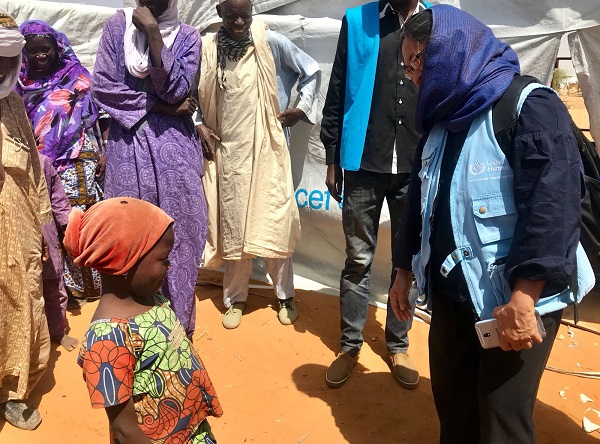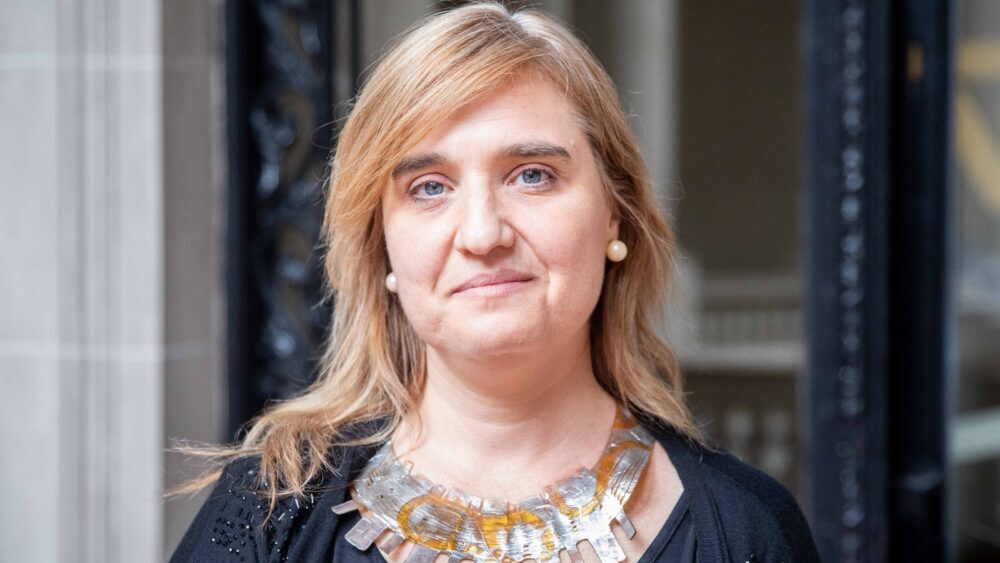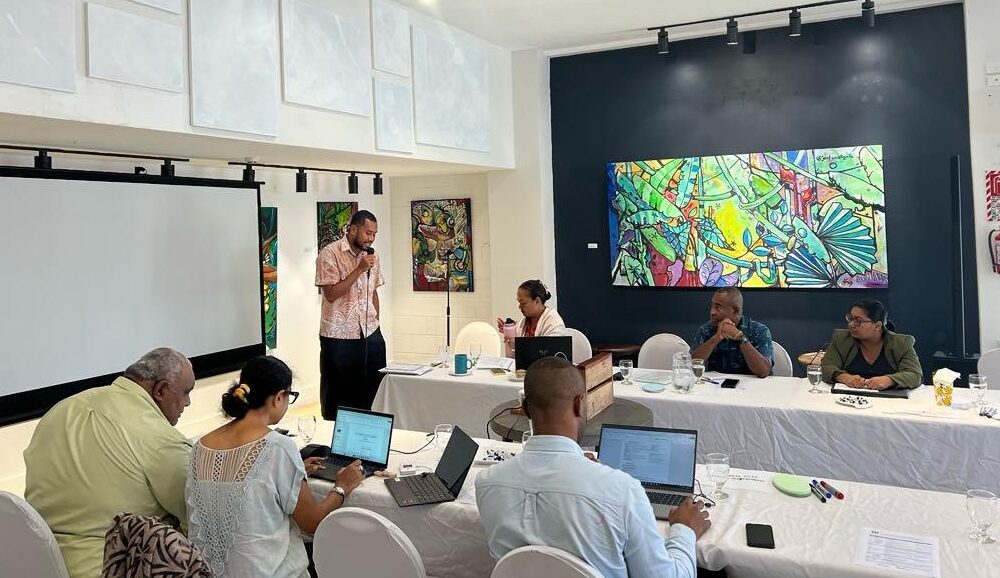“There is a recurrent debate about: are they really internal displaced persons (IDPs)? or are they migrants? are they moving voluntarily? or are they forced to move? We have to put our foot down, yes they are IDPs, even though it happens over a long period. Many legal and policy standards and national laws already exist but we need to apply them to slow-onset situations as well, not only to sudden-onset situations.”
At the margin of the 75th Session of the UN General Assembly, during an online side event, the Special Rapporteur on the Human Rights of Internally Displaced Persons, Ms. Cecilia Jimenez-Damary will present the findings and recommendations of her thematic report on internal displacement in the context of the slow-onset adverse effects of climate change. At this occasion, the Special Rapporteur gave an in-depth interview to the PDD Secretariat. She spoke with determination and passion about her report and its main messages, but also about her mandate, her priorities, her challenges.
——-
PDD Secretariat: You have been the Special Rapporteur on the Human Rights of Internally Displaced Persons since 2016, can you tell us about your mandate, your priorities and your challenges?
 Ms. Cecilia Jimenez Damary: The mandate of the Special Rapporteur on the Human Rights of Internally Displaced Persons (IDPs) was set up as a special procedure within the United Nations (UN) Human Rights Council. Two resolutions, passed every two years respectively in the UN General Assembly and the UN Human Rights Council, govern the task of a Special Rapporteur on the Human Rights of IDPs. Within this context, my priorities continue to cut across the different categories of internal displacement situations, that is internal displacement caused by armed conflict, violence, human rights violations, natural hazards and the effects of climate change, as well as man-made disasters. An internally displaced person (IDP) is an IDP, regardless of any of the causes of the internal displacement situation they are in while the responsibility of the State remains the same in terms of ensuring their human rights.
Ms. Cecilia Jimenez Damary: The mandate of the Special Rapporteur on the Human Rights of Internally Displaced Persons (IDPs) was set up as a special procedure within the United Nations (UN) Human Rights Council. Two resolutions, passed every two years respectively in the UN General Assembly and the UN Human Rights Council, govern the task of a Special Rapporteur on the Human Rights of IDPs. Within this context, my priorities continue to cut across the different categories of internal displacement situations, that is internal displacement caused by armed conflict, violence, human rights violations, natural hazards and the effects of climate change, as well as man-made disasters. An internally displaced person (IDP) is an IDP, regardless of any of the causes of the internal displacement situation they are in while the responsibility of the State remains the same in terms of ensuring their human rights.
The thematic priorities I identified in 2016 were:
Law and policy – In terms of ensuring that governments and the international community act in accordance with established norms. It includes putting in place relevant legislation and policy that is in accordance with international human rights and international humanitarian law. The only continent, which has a regional convention, is Africa, so part of my work is to encourage the ratification and/or accession of African countries to the Kampala Convention, which includes natural hazards, as well as the domestication of IDP protection.
Data and analysis – You cannot have a protection approach or any coherent approach without relevant data about what the situation is. We really need to improve data collection and analysis in order to propose evidence-based solutions towards the protection of IDPs.
Durable solutions – Evidence shows that we have more and more protracted displacement situations, regardless of what caused the internal displacement, be it violence, natural hazards or man-made disasters etc. There is at least one generation that is unfortunately growing up in eternal displacement situations in many parts of the world. We really need to resolve this, in accordance with the Inter-Agency Standing Committee (IASC) Framework on Durable Solutions, which actually includes human rights criteria.
Participation of IDPs themselves in all decisions affecting them, at all levels, at all times.
Throughout all these priorities, I am also spotlighting groups within the IDP populations who are vulnerable or marginalized. For example, IDP children and IDPs with disabilities.
In terms of process priorities:
- I focus on the holistic application of international law for the protection of IDPs. Not just ad hoc!
- Ensuring State responsibility based on national sovereignty at all levels is also key to ensuring good governance.
- Localization is very important. We should not only have internationals coming in and out and calling the shots! We need more local people on the ground, not only governments but also civil society players, with IDPs themselves bringing protection and solutions to IDPs and create ownership and responsibility.
- Collaboration is also very relevant to solutions. We often hear about the humanitarian-development-peace nexus – fantastic! However, there is only incipient collaboration amongst actors in those different fields. Humanitarians sometimes go their own way, and it is very difficult to get the attention of development actors towards IDPs despite the Sustainable Development Goals (SDGs) theme of ‘Leaving No One Behind’. There are some achievements, but so many obstacles to make a sustainability of the nexus a reality both in policy and operationally in the field. There is a divide between humanitarian and development actors, not only in terms of policy, but also in terms of operational objectives and funding cycles. A lot of advocacy and ‘soul searching’ is needed to address this challenge.
Again, underneath the process priorities lies IDP participation, which is not just a substantive priority, but also a process priority.
Regarding the challenges, as I mentioned, there is a lot of rhetoric regarding the humanitarian-development-peace nexus with incipient collaboration. The other challenge is the mainstreaming of the human rights of IDPs into many of the UN agencies in the system. It definitely has been the main challenge of my mandate until now: protection and human rights are usually seen as a second priority.
 PDD Secretariat: Your report on the human rights of internally displaced persons in the context of the slow-onset adverse effects of climate change was recently submitted to the UN Secretary-General and the General Assembly – what are the highlights and the main message?
PDD Secretariat: Your report on the human rights of internally displaced persons in the context of the slow-onset adverse effects of climate change was recently submitted to the UN Secretary-General and the General Assembly – what are the highlights and the main message?
Ms. Cecilia Jimenez-Damary: First of all, I am very grateful for the valuable support, cooperation and collaboration with the Platform on Disaster Displacement (PDD) from conceptualization until the report was published – thank you very much! So, why did we limit the report to slow-onset disasters related to internal displacement? A question always being asked. Indeed, there are already many publications and discussions taking place on internal displacement vis-a-vis the effects of climate change. However, I have found that slow-onset disasters are acknowledged, but not necessarily in terms of their specific relationship with internal displacement and the need for more discussions at higher levels so that States and the international community can pay more attention to it and make informed decisions.
Slow-onset events are defined as events that evolve gradually from incremental changes and occurring over many years, making it difficult to visualize them, as we cannot see them immediately as we do with sudden-onset.
There is also a recurrent debate about: are they really IDPs? or are they migrants? are they moving voluntarily? or are they forced to move? We have to put our foot down, yes they are IDPs, even though it happens over a long period. The Guiding Principles on Internal Displacement clearly provide that IDPs also leave because they are obliged to. The report includes that discussion as well as the applicable legal and policy frameworks. Many legal and policy standards and national laws already exist but we need to apply them to slow-onset situations as well and not only to sudden-onset situations.
This understanding of internal displacement patterns in the context of the slow-onset adverse effects of climate change in terms of movement patterns is very important as it allows us to understand the vulnerability of the IDP population, in terms of who is left behind or who is more vulnerable because of the particular characteristics of slow-onset hazards.
The second part of the movement processes is the return. IDPs may or may not return, may or may not integrate, which brings us back to the question of durable solutions. However, because of the nature of slow-onset climate change, return may not even be possible.
Another important part of the report is the interrelationship between the slow-onset adverse effects of climate change and armed conflict. This discussion needs to be pursued further, not only in the context of international human rights law but also within international humanitarian law. I know the International Committee of the Red Cross is looking into this.
Data and evidence including academic research also represents a big portion of the report as they provide valuable information to inform laws, operations, policies and we need more of it. For example, we need more research on land use planning to reduce displacement risks, which is also a responsibility of national and local governments.
The report highlights children, persons with disabilities and women etc., while looking into the gender roles and the unequal distribution of resources to be able to integrate them in the response. As underlined in the report, it is important to look at vulnerable groups as agents of positive change and not just beneficiaries. I keep highlighting the imperative necessity of participation, that is, to include them in decisions at all levels.
Last but not least, on the COVID-19 pandemic. The report also talks about the human rights obligations of States in terms of prevention and preparedness, the necessity of protection and assistance, and durable solutions. There are also other obligations like IDP participation and those of the host community. The report further goes into the role of the international community, not just with regard to the States and international organizations cooperating, but also concerning donor countries assisting affected States in preventing, protecting and finding solutions. It includes specific suggestions, such as technology transfer, capacity building, strengthening coordination measures, climate change mitigation, etc.
Businesses are also important actors. We cannot talk about climate change without looking into the role and the responsibility of business. We are therefore having substantive discussions on the responsibility of business.
 The last item we looked at in the report is the responsibility of national human rights institutions, an entity that clearly takes a human rights-approach in IDP protection.
The last item we looked at in the report is the responsibility of national human rights institutions, an entity that clearly takes a human rights-approach in IDP protection.
The report has a long list of conclusions and recommendations but the main theme, the ‘chapeau’, is about addressing internal displacement in the context of slow-onset adverse effects of climate change in a holistic manner, and raising awareness on the complexities and multi-causality of human mobility in such contexts. It requires joint action! Not just internally within the State – at national and local levels – but also with civil society, with the citizenry, with affected populations, and amongst affected States, and the international community. In other words, it has to be a multi-stakeholder coordinated approach with the involvement – very importantly – of peace actors in settings in which the adverse effects of climate change interact with armed conflict.
Many of my recommendations to States focus on enhancing climate change mitigation efforts, but also to integrate climate change related displacement into laws, policies and programmes on human mobility – they are not two separate things, they have to be put together as a holistic approach! Adopting human rights based approach is another must, while ensuring the meaningful participation of communities themselves.
My main recommendation to the international community and donors is to support climate change mitigation and adaptation measures, disaster risk reduction and sustainable development undertaken with respect to human rights, and link them together with internal displacement approaches in the context of climate change mitigation and adaptation. My main recommendation to businesses is to incorporate the Guiding Principles on Business and Human Rights as they are helpful in their role to promote human rights.
Two other recommendations. One is to national human rights institutions, a good number of national human rights institutions are independent within their countries, although they are state institutions, they have been doing some work in climate change but should ensure that slow-onset is part of their attention as well.
Last but not least is academia; academia is really into this topic. Therefore, it is really important for academia to continue and enhance looking into account the experiences of the different groups with distinctive features of displacement in different environments and roles of various actors related to the adverse effects of slow-onset situations.
 PDD Secretariat: What are you hoping to achieve by the end of your mandate?
PDD Secretariat: What are you hoping to achieve by the end of your mandate?
Ms. Cecilia Jimenez-Damary: Together with Austria, Honduras and Uganda as main sponsors in the UN Human Rights Council, I convened the GP20 Plan of Action, which is actually ending at the end of 2020. I would really like to see a continuation of such collaboration based on the achievements of the GP20 Plan of Action.
Secondly, within the GP20 and outside of it, I would like to see more relevant actors getting involved with a human rights based approach. I was very happy for example, that the Pope has instituted a policy that faith based organizations and the church itself would actually look at the situation of IDPs. It is a big achievement, because of the existing role of faith-based organizations around the world and their work in many places where displaced populations can be found, regardless of what type of displacement it is. This is what I mean by more relevant actors.
The third point is that genuine IDP participation should be more enhanced and more institutionalized in policy and in practice, particularly in operations. Let us really involve them, give them ownership and have them as political agents in their own right and not merely as beneficiaries.
Highest standards of accountability is the fourth. For example, more and more States are encouraged to have accountability and facilitate IDP participation through more relevant laws and policies in accordance with international human rights standards. This is important! This also includes ensuring that such approaches on IDP protection are integrated into justice systems.
This is the reason that my second report to the UN General Assembly was about internal displacement and transitional justice because there is such a thing as arbitrary displacement and remedies, as well, are needed as part of durable solutions.
These are part of international human rights obligations of States that the international system is supposed to uphold.
Another element regarding higher standards of accountability is data and analysis, which should be integrated into national and international governance and statistical processes. This is why I have been involved in the UN Statistical Commission Expert Group on Refugee and IDPs Statistics where now there is a manual that was developed by national statistical offices themselves on how to generate, collate and analyze statistics on refugees and IDPs. This is a big step towards national responsibility.
Moving on to operational level collaboration, let us make the humanitarian-development-peace nexus a reality rather than the rhetorical approach it is mostly today.
In all of that, human rights should remain as a baseline. We have the Guiding Principles on Internal Displacement and they are still the gold standard with which we have to measure ourselves as to if we’re doing it correctly and appropriately, or not.
——-
Photos: © Office of the Special Rapporteur on the Human Rights of IDPs
Useful Links
Read more about the Special Rapporteur on the Human Rights of Internally Displaced Persons
Listen to the podcast – How the UN Helps Internally Displaced Persons
Download the Report on internal displacement in the context of the slow-onset adverse effects of climate change
Report on internal displacement in the context of the slow-onset adverse effects of climate change
Download the flyer for the online side event:
Read about the online side event on 20 October 2020
Learn more about PDD’s work in our Workplan 2019-2022:





